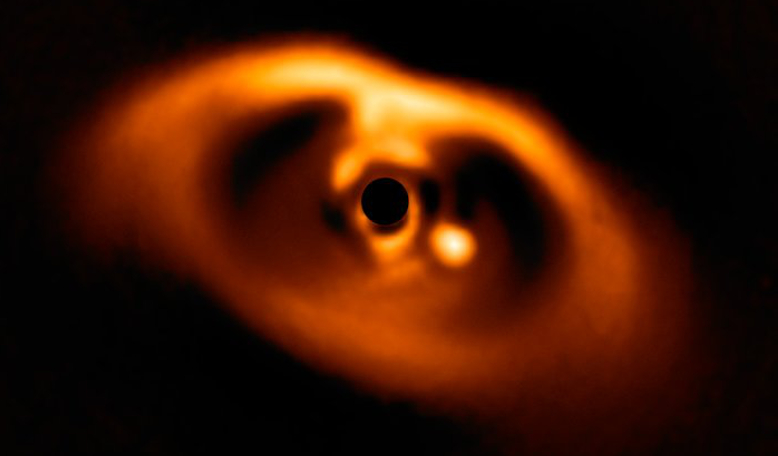Although evidence of the existence of new-born planets hiding in the dusty discs of young stars has been presented many times, a confirmed image of such a scenario has been lacking. Now, using SPHERE, a planet-hunting instrument on ESO’s Very Large Telescope, astronomers have finally captured the very first image of a protostar circling the very young star PDS 70. Not only that, but the data suggests that the planet’s atmosphere is cloudy.
SPHERE or the Spectro-Polarimetric High-contrast Exoplanet REsearch instrument is a powerful planet finder designed to take images directly of exoplanets – a method known as direct imaging. Its objective is to detect and study new giant exoplanets orbiting nearby stars, however it can also take images of dusty debris discs around stars where planets may be forming.
“These discs around young stars are the birthplaces of planets, but so far only a handful of observations have detected hints of baby planets in them,” explains Miriam Keppler, who lead the team behind the discovery of PDS 70’s still-forming planet. “The problem is that until now, most of these planet candidates could just have been features in the disc.”
SPHERE’s strength lies in the instruments ability to mask the light from the central host star, therefore helping to reveal the signs of planet formation. Capitalising on this technique, astronomers led by a group at the Max Planck Institute for Astronomy in Heidelberg, Germany have finally been able to capture a spectacular snapshot of a protoplanet carving a path through the gas and dust surrounding its host star.
The young planet, known as PDS 70b, was found as part of two survey programmes called SHINE (SpHere INfrared survey for Exoplanets) and DISK (sphere survey for circumstellar DISK) designed to shed light on planetary evolution processes. SHINE aims to image 600 young nearby stars in the near-infrared to discover and characterise new exoplanets and planetary systems, while DISK explores known, young planetary systems and their circumstellar discs to study the initial conditions of planetary formation and how these evolve to form fully-fledged exo-planetary systems.
After its discovery, a secondary team of astronomers which also included Keppler, studied the different wavelengths of light streaming from the protoplanet to help infer that PDS 70b has a cloudy atmosphere.
“Keppler’s results give us a new window onto the complex and poorly-understood early stages of planetary evolution,” comments André Müller, leader of the second team to investigate the young planet. “We needed to observe a planet in a young star’s disc to really understand the processes behind planet formation.”
Thomas Henning, director at the Max Planck Institute for Astronomy and leader of the teams, summarises the scientific adventure: “After more than a decade of enormous efforts to build this high-tech machine, now SPHERE enables us to reap the harvest with the discovery of baby planets!”











